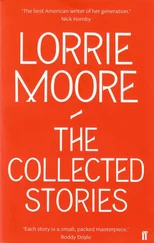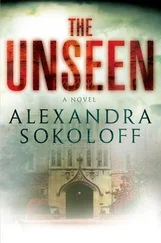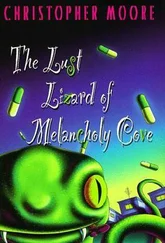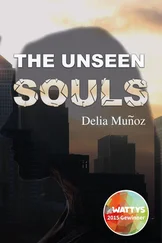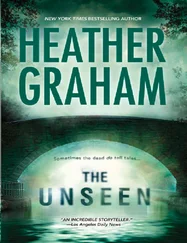She switched it on. A deep flush came over her face; her heart beat more quickly. First there was the whir of whatever disk occupied its disk drive, and then the screen lit up, displaying the smiling computer icon — content, it always seemed to her, because its belly was full of data.
There was a metal folding chair facing the computer, and while the machine booted up she perched on the edge of it nervously, alert, waiting for sounds in the house.
When, at last, the machine was awake, Ada saw that the name of the disk was Dontlook12 , and, after a moment of deep, shameful self-interrogation, she opened it anyway. She was an ethical child in many ways, but the temptation was too great.
The folder revealed a series of text documents titled, simply, One, Two, Three . The last one was titled Fiftyfive , and it had last been opened the day before. She double-clicked on the name. When it appeared, it looked at first to be corrupted: she found nothing but a series of numbers separated by periods and slashes.
2.8.22.23.8.21.7.4.2 / 4.7.4 / 22.4.12.7 / 11.12 / 23.18 / 16.8 / 4.17.7 / 12 / 22.4.12.7 / 11.12 / 23.18.18
She had seen this before: text files so corrupt that they looked like gibberish. But this one looked different. No punctuation marks populated it, for one thing; normally, corrupt files looked like a list of cartoonish substitutes for curse words (often reflecting the feelings of the user), ampersands and asterisks strung together like pearls.
This, she thought with some excitement, looked more like code.
David had always been interested in codes: he viewed them as thinking exercises, puzzles that he created and asked Ada to solve. The simplest code, the one he started her on as soon as she could read and write and count, was numerical substitution, an easy back-and-forth between letters and numbers, like so:
a
b
c
d
e
f
g
h
i
j
k
l
m
n
o
p
q
r
s
t
u
v
w
x
y
z
1
2
3
4
5
6
7
8
9
10
11
12
13
14
15
16
17
18
19
20
21
22
23
24
25
26
This encryption key was the first one Ada memorized, and now it came so easily to her that she could almost think in it, could spell out words and sentences in numbers as easily as letters. Variations on this most basic key abounded. The numerical substitutions for letters could, for example, be shifted by x places, so that a no longer corresponded to 1 , like so:
a
b
c
d
e
f
g
h
i
j
k
l
m
n
o
p
q
r
s
t
u
v
w
x
y
z
18
19
20
21
22
23
24
25
26
1
2
3
4
5
6
7
8
9
10
11
12
13
14
15
16
17
A more difficult code to crack could be achieved if numerical substitutions were chosen randomly and then used uniformly, thus:
a
b
c
d
17
2
5
12
and so on.
When breaking a code like the last one, the decoder would have to rely on the lengths of common words for cracks in the code — words like I and a , which would appear as stand-alone numbers and act as a good starting point for the tedious work of deciphering everything else. This loophole, however, could be easily eliminated if the words were run together with no spaces in between. Then the decoder would have to hope that he or she had an excerpt of such substantial length that the frequency with which certain letters occur in the English language could be taken into consideration.
A fourth, considerably more difficult variant on number substitution involved machine-encoded text, a sort of polyalphabetic code in which each letter had no permanent, standard substitute. The machines would instead disguise each letter differently at various points in the text, using either mechanical or electronic hardware to execute the task. Only a decoding machine programmed as an exact mirror of the encoder could untangle the knot of words.
And then, at last, there was the one-time pad: a unique key that, when combined with the original message, formed an encryption that was impossible to break without the pad itself.
Several years ago, David had given Ada a book to read on the subject: Codes and How to Break Them , by Walter Samuelson. And for the length of one summer, her eleventh, the two of them had each tried to stump the other with coded messages and riddles. David, of course, always won.
He had a personal code he had invented, a straightforward scrambled alphabet cipher, without a set shift.
“It’s terribly easy to crack,” he said, “but it will at least slow someone down.”
He had memorized it, and could now write fluently in it; he encouraged her to do the same. Soon enough, Ada, too, became adept at using what she came to call “David’s code.”
He wrote in this code habitually; most of the text files on his computer couldn’t be parsed immediately by anyone other than the two of them. This satisfied him deeply, seemed to give him a deep sense of comfort that she couldn’t explain. “It’s really the only way to safeguard your ideas,” he said, exposing his mild streak of paranoia, about which those closest to him often teased him. It came from the same place in him as his mistrust of the police, his resentment of authority.
“But what if you die?” Ada had asked him once.
“Then you’ll be in charge of my secrets,” he told her, raising and lowering his eyebrows comically.
In Liston’s attic, Ada sat for a while, contemplating the numbers before her on the screen. The slashes, she speculated, represented spaces between words. Therefore, 12 seemed to be a stand-alone word, either I or a . Scanning the rest of the text, she noticed 12 again in a short word that appeared two times: 11.12 .
What two-letter words existed that ended in either a or i ?
Ha was one, but it seemed unlikely.
Hi was a likelier candidate, and, to her delight, it made sense that hi would be represented as 11.12 , since h directly preceded i .
Quickly, on a scrap of paper that she pulled from one of the drawers in the desk, she began to write down the alphabet and populate it with twenty-six numbers shifted according to the two she’d already placed:
a
b
c
d
e
f
g
h
i
j
k
l
m
n
o
p
q
r
s
t
u
v
w
x
y
z
4
5
6
7
8
9
10
11
12
13
14
15
16
17
18
19
20
21
22
23
24
25
26
1
2
3
Code-breaking always lifted Ada’s spirits: it felt in some fundamental way like restoring order in the universe, righting something overturned, putting the spilled milk back into the carton. There was justice in it. It would be easy now, she knew, to decrypt the simple code on-screen, and she almost wished it had been more difficult. Something to occupy her time for longer.
But before she could continue, she heard loud footsteps on the second-floor landing. This had not been a part of her plan; she’d been certain that no one else was home. She sat very still, her toes and fingers buzzing with adrenaline, and considered her options. Would it be better to hide or to walk down the stairs nonchalantly? After all, she lived here, too, now; the house was hers to explore as much as it was anyone’s. (She did not, of course, fully believe this.)
Читать дальше

